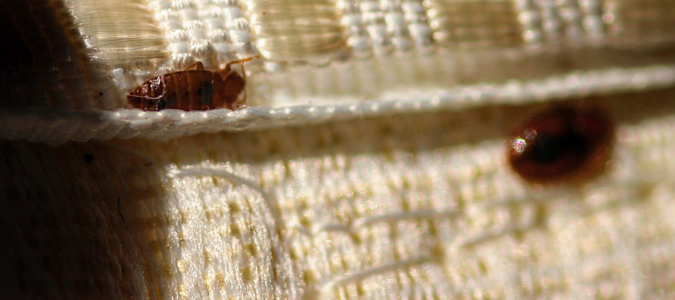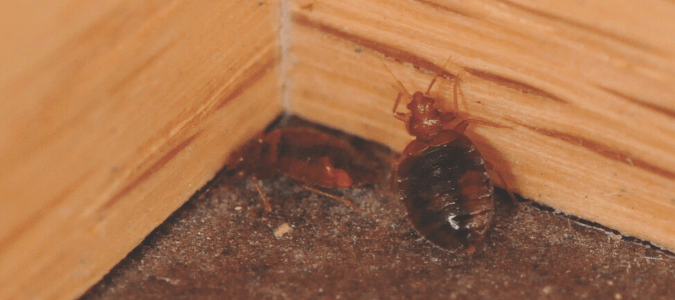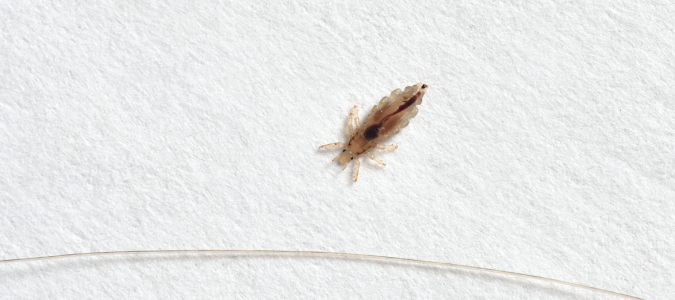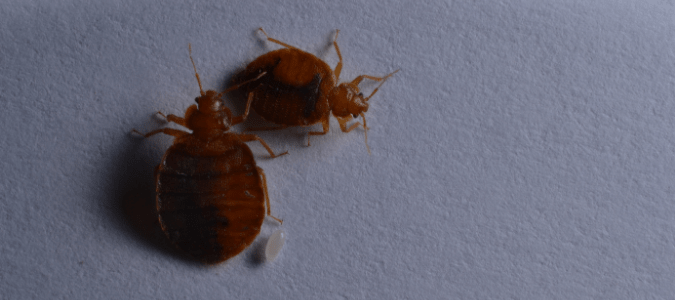We all need quality sleep to function our best. But something as small as a bed bug can ruin a good night’s sleep. These tiny pests can leave itchy bite marks during the night, causing skin irritation.
If you think you have a bed bug infestation at home, identification is the first step in treating the problem. Here’s a guide to help you recognize bed bugs and confirm their presence in your home. After identification, the next step is to contact pest control professionals. They know how to control bed bugs so you can enjoy your sleep again.
Bed Bug Size, Color and Habits
Bed bugs can be hard to recognize because they may be confused with other insects. But, there are ways to set these pests apart from other household pests.
You can identify adult bed bugs by their wingless, reddish-brown bodies. They’re around a quarter of an inch long and are flat and oval. They’re about the size and shape of an apple seed. As for their babies, they are smaller and can be yellowish or translucent. They are almost transparent if unfed, making them harder to spot. Bedbug eggs are pearly white and are about the size of a pin head.
Bed bugs seek out hiding places and live together there. The female can lay hundreds of eggs in her lifetime, each no bigger than a speck of dust. The nymphs will shed their skin five times before reaching maturity and need to feed on blood before each shedding. They need a month or so to become adults under ideal conditions.
While bed bugs can’t fly, their six legs can carry them swiftly across walls, floors and most other surfaces. They can move as fast as four feet per minute. That’s the equivalent of a sprinting human. They can quickly travel between floors and rooms and look for new bed bug hiding places without being seen.
Signs of a Bed Bug Infestation
Because bed bugs travel quickly, it’s often difficult to spot them in action in your home. But there are telltale signs of an infestation you can use to inspect for bed bugs, including the following:
Bites
If you wake up with small, red bumps, that’s a possible sign of a bed bug infestation. It’s extra confirmation if the bites are in clusters or a zigzag pattern. Bed bugs bite exposed skin, usually targeting the hands, arms and legs. However, people react differently to bed bug bites. Some don’t develop welts at all. So waking up without bites doesn’t automatically mean your home is bed bug-free. Keep your eyes peeled for other signs.
Musty Scent
If you keep your home clean, but there’s a musty scent wafting in the air, that’s a possible sign of bed bugs. This smell can be a mixture of a few things—dead bed bugs, pheromones from live ones and their droppings. Some people say it is similar to the smell of moldy towels or laundry, while others liken it to rust. The odor usually becomes more offensive over time.
Blood Stains
Blood stains are probably the most alarming sign of a bed bug infestation. They appear as rust-colored smears or splotches on pillows, bed sheets and clothing. When bed bugs feed on our blood at night, we might move in our sleep and crush these pests. While they don’t necessarily die, the blood they just sucked up will leak and make these blood stains.
Sometimes, the blood stains come directly from the bites. Bed bugs’ saliva has anticoagulant properties, so human blood can continue to flow for a bit after feeding. If you have blood stains on your sheets, check for other possible sources, like a cut. It’s safe to assume you have bed bugs if you can’t find any.
Fecal Spots
Aside from bloodstains, bed bugs can also leave behind fecal spots. However, these are darker and smaller, usually only about double the size of a period at the end of a sentence. They look like ink blots from marker pens. You can find fecal spots anywhere, including the bed sheets, curtains and walls. There are usually many of them around bed bugs’ shelter spots. Unfortunately, they are hard to remove on fabric and will smear once they come in contact with water.
Shed Skins
Young bed bugs go through several rounds of shedding before reaching maturity. They leave behind empty translucent husks that are easier to notice than the bed bugs themselves. You can find them in spots where these insects hide and breed, including mattress seams, wall cracks and upholstered furniture.
Live Bed Bugs
There’s no better sign of an infestation than seeing live bed bugs. They usually hole up during the day and only come out if they’re in need of a blood meal. Contact a pest control specialist to control your bed bug problem.
Bed Bugs Versus Lice: How Can You Tell Them Apart?
To the untrained eye, bed bugs, pictured above, and lice may look identical. But homeowners shouldn’t confuse the two. Even though they are both blood-suckers with similar looks, they require different environments to thrive. Here’s how to tell them apart.
Color
Adult bed bugs are opaque and shiny with a reddish-brown hue. On the other hand, lice are matte, translucent and grayish-beige. However, they can appear brown in the middle because blood shows through after a feeding.
Size
Both bed bugs and lice are tiny pests, so size may not be the best point of comparison. Bed bugs are slightly larger than lice. Adult bed bugs are around a quarter of an inch, roughly the size of an apple seed. Meanwhile, lice are usually an eighth of an inch, comparable to a sesame seed.
Shape
Bed bugs have flat oval bodies no thicker than a credit card. But they balloon after feeding on blood. On the other hand, lice are narrow and oblong.
Location
Head lice, pictured above, inhabit human scalps. They will remain there unless we scratch our heads, get a haircut or treat them. As for bed bugs, they bite any part of our bodies but don’t use humans for shelter. They seek out hiding spots in our homes and hole up until they have to feed.
Both lice and bed bug infestations are challenging for any homeowner to deal with. But you don’t have to face it on your own. A pest control specialist can help you manage the situation and restore peace in your home.
Can Bed Bugs Live in Wood?
If you’re wondering whether bed bugs can hide in wooden furniture, they absolutely can. They use practically anything as a hiding spot if they can squeeze themselves in. Fortunately, there are ways to make your home less cozy for these pests. Here are some prevention tips for you.
Eliminate Hiding Spots
The most effective way to prevent a bed bug infestation is to eliminate possible hiding spots. Inspect your walls, furniture, ceiling and baseboards for holes and cracks and seal them off. Peeling wallpaper and loose electrical faceplates are other possible hideouts, so fix those too. Lastly, be mindful of clutter buildup and vacuum nooks and crannies regularly.
Be Cautious of What You Bring Into Your Home
Bed bugs are stowaways. They enter your home through luggage, secondhand furniture and other items you bring into your home. Prevent infestations by inspecting unfamiliar things, especially refurbished and secondhand furniture. Even new mattresses can be bed bug carriers because they come in the same trucks as used mattresses. Never take sofas, mattresses and other furniture from a curb.
Conduct Regular Home Inspections
It’s helpful to know how to check your bed for bed bugs. To inspect your mattress, use a credit card to scrape along its seams. That will drive bed bugs out of their hiding spots, allowing you to confirm their presence in your home. It’s also a good habit to remove electrical faceplates and inspect furniture. That will let you check for live bed bugs, eggs and shed exoskeletons. If you see dark stains on your mattress and furniture, put rubbing alcohol or glass cleaner on them. If they melt into a rusty-brown color, that confirms they are bed bug droppings.
While there are ways to deter a bed bug infestation, these pests can go undetected for a long time and spread fast. Contact a pest control specialist if you notice any signs of these tiny insects in your home.
Let the Professionals Deal With the Bed Bugs in Your Home
Now that you know more about bed bug size, color and habits, it’s easier to detect them in your home. But it doesn’t stop with identification. You must follow through with treatment. Let pest control professionals assess the severity of the infestation in your home. They will then decide on the best plan of action to control these pests.
ABC Can Control Your Bed Bug Problem
Bed bugs are annoying pests that are hard to control on your own. When you notice an infestation, contact ABC Home & Commercial Services for pest control services. We have multiple strategies to control bed bugs, so you and your family can be comfortable again.



